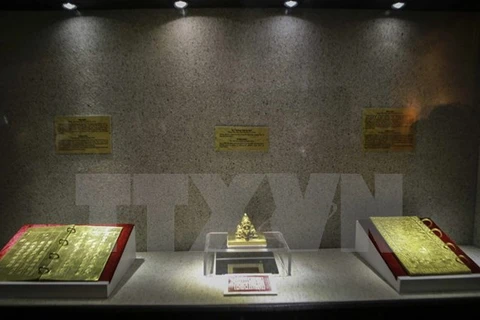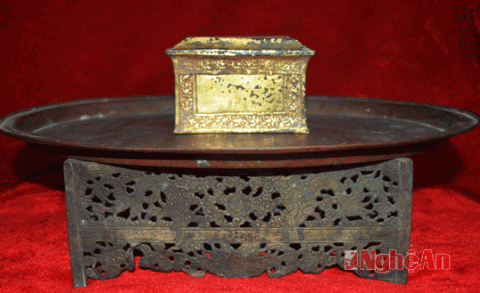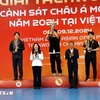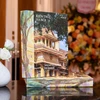 Dau Pagoda in Bac Ninh province, which hosts a range of tangible and intangible cultural heritage. (Photo: VNA)
Dau Pagoda in Bac Ninh province, which hosts a range of tangible and intangible cultural heritage. (Photo: VNA) Bac Ninh (VNA) - The northern province of Bac Ninh is well-known for hosting a number of architectural, religious and cultural heritage.
The province has recently received three more sets of national treasures as the recognition approved by Prime Minister Nguyen Xuan Phuc last December.
The newly recognised treasures include the dragon-carved stone pillars at Dam Pagoda which are dated in the 11th century; a set of statues of ten sacred animals of Phat Tich Pagoda, dated from the 18th century; and a set of statues of four female personifications of the natural forces of Dau-Luy Lau region.
The three treasures are all original and only items with great cultural and artistic values.
The four statues include Dharma Cloud (in Dau Pagoda), Dharma Rain (in Dau Pagoda), Dharma Thunder (in Dau Pagoda) and Dharma Lightning (in Dan Pagoda). They are believed to be the four goddesses representing the four important natural forces of agriculture of Vietnamese people. All the four statues are made of wood.
The stone pillar of Dam Pagoda dated back the 11th century, the time when the pagoda was constructed. It is preserved in almost intact state.
The stone pillar is considered as one of the most delicate and epic existing sculpture in the history of Vietnamese fine arts.
The stone pillar features a pair of dragon with delicate and lively decoration lines. In the body of the dragons carved the scale with gentle and charming curves. Each of its feet has five toes, which are very sharp, the toenails curl into a circle, its front feet carry glittering gemstone.
Besides a pair of dragons, artisans add chrysanthemum pattern to make the pillar look more delicate and harmonised.
Being imprinted with the original and characteristic features of fine arts in the Ly dynasty, the pillar will give researcher a deep insight into the fine arts at the time.
A stone pillar is closely attached to the history of formation and construction of the pagoda, therefore this could be a source of information to study the architecture of the structure.
The collection of statues of ten sacred animals of Phat Tich Pagoda also attract attention of researchers and visitors.
The ten stone statues are being placed symmetrically in a corridor of Phat Tich pagoda.
Each of these works is made from a whole stone (except for the buffalo statue which is formed by two stones). The collection of stone statues shows the diversity in subject of creativity in Buddhism fine arts in Vietnam.
The treasures recognised this time give valuable information about the characteristic feature of Buddhist culture and serve as an authentic proof of the formation and development of Buddhism in Vietnam.
According to statistic of Bac Ninh’s Department of Culture, Sports and Tourism, the province has a total of eight sets of national treasures. All the treasures are from the relic and made of stone or wood.
The province will continue to file for the application for ten other sets of valuable artefacts.
Nguyen Van Anh, deputy director of the deparment, said: “Since Bac Ninh had their first national treasures recognised in 2012, the province has implemented many conservation projects for the treasures.
In 2014, the province promulgated a mechanism to decentralise the management work for relics, artefacts and national treasures.
The Department of Culture, Sports and Tourism of Bac Ninh is in charge of management for the national treasures preserved at special national relics.
National treasures preserved at the national relics are under the management of people’s committee of the district where the relic locates.
In the upcoming time, an information board introducing the relic and value of the national treasures will be made available in each relic.
The management board of the relic will publish books featuring national treasure of the province, according to Anh.
Currently Bac Ninh has a total of eight sets of national treasures. It is also home to several significant cultural heritage which includes two intangible cultural heritage recognised by UNESCO – quan ho (love duets) and ca tru (ceremonial singing).
With hundreds of festivals held annually, Bac Ninh is considered to have the most festivals in Vietnam. Many have become national intangible cultural heritage, such as Lim Festival, Diem Village Festival, Dong Ky Village Festival. Many crafts including Dong Ho folk woodcut paintings, Phu Khe wooden carving and Phu Lang pottery were also recognised as national heritage.-VNA
VNA






















